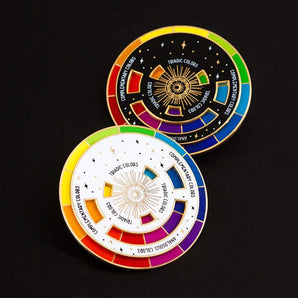My course creation journey has been a rewarding one, but it hasn't been without its challenges and setbacks. And, like many others in this field, I fell prey to some common myths that nearly led me to burnout. The first one is my biggest doozy…
Myth #1: "More content equals more value"
One of the most prevalent myths is the belief that cramming your course with endless content equates to providing more value. However, this myth led me down a perilous path. I found myself tirelessly generating massive volumes of content, content of all kinds, convinced that it was the best move. Yet, what I realized much later was that my well-intentioned approach often overwhelmed my students. They were drowning in a sea of information and struggling to navigate all of it.

What my students truly craved was something more precious—clarity, understanding, and the ability to apply what they learned. Now I get the most joy out of striking the perfect balance between content and value, ensuring that the content I provide leaves a lasting impact without overwhelm. I created my own strategies and insights on how to enforce that balance, while still being able to lean into the ideas that would have been “too much” and finding new ways they can compliment what I’m offering instead of overloading it. That’s where the magic of Creative Course Lab comes to life! Get excited because it’s almost time!
Myth #2: "One-size-fits-all is the best teaching strategy"
Speaking of balance, I didn’t fully grasp that I was a bit off when I assumed that creating a single, standardized curriculum would simplify everything. My goal at the time was to reach a broad audience. The problem is, when we begin teaching, especially on camera, it’s easy to be overly focused on how we’re teaching, which means we’re not focused enough on how students were learning. The drawbacks to one-size-fits-all is that
- Learner diversity Your audience is diverse, with varying backgrounds, experiences, and learning preferences. What works for one may not work for another. A standardized curriculum may leave some learners feeling excluded or disengaged.
- Missed opportunities By not tailoring your course to individual needs, you may miss opportunities to provide targeted content or address specific pain points. This can lead to missed connections and limited learning outcomes.
- Lack of engagement When learners don't feel like the course is designed for them, their motivation to engage can dwindle. A personalized approach is more likely to keep them actively participating and invested in the learning journey.

So when you have a solid foundation in place, a structure that is sure to hit just right, you don’t need to worry about any of this. I mean it—it’s not something to be overthought. It’s a matter of having a method in place during your planning stages. And again, if you plan on joining me for the upcoming open enrollment, we’ve got this covered with a thousand checkmarks so don’t think you need to aimlessly put one together right this second haha. I gotchu! And finally,
Myth #3: “Build it and they will come”
At some point in our creative journey, we've all heard the notion that if you create something remarkable, people will naturally flock to it. While it's a heartwarming idea, it often doesn't align with reality, especially in the world of online education. ESPECIALLY-especially in our modern time today.
The truth is, even if you've poured your heart and soul into crafting the most valuable and life-changing course, it won't gain the attention it deserves without a strategic approach to marketing and promotion.
Understanding this myth is crucial because it highlights the importance of two critical components: marketing and promotion. You can have the best course in the world, but if no one knows about it, your impact remains limited.
Behaviors change, algorithms change, so this is up to YOU.

Action steps:
- Create a marketing plan: Start by outlining a comprehensive marketing plan for your course. This should include all of the strategies for reaching your target audience.
- Build an intentional online presence: Establish yourself as an authority in your niche. Share your expertise through blog posts, videos, or social media content. This will attract potential students who value your knowledge.
- Leverage your network: Don't underestimate the power of your existing network. Ask friends, colleagues, and previous students to spread the word about your course.
- Consider invest in advertising: You might decide you want to allocate a budget for online advertising. Platforms like Google Ads and Facebook Ads can help you reach a wider audience. Quick tip: Learn from my mistake… Don’t jump into ads at random. There is MAJOR strategy behind what brings traffic and what brings conversions.
- Engage with your audience: Actively engage with your target audience on social media and online forums. Answer questions, provide valuable insights, and build a community around your course topic.
- Offer value first: Before promoting your course directly, offer value to your audience. Share free resources, webinars, or workshops related to your course topic. This establishes trust and showcases your expertise.
Remember, course creation is not just about crafting content; it's about getting that content into the hands of those who need it most. By dispelling the "build it and they will come" myth and taking strategic marketing actions, you'll set yourself up for success in the competitive world of online education.
For this reason, there’s an entire bonus class that I’ve give to my Creative Course Lab students because I simply won’t have it that you create an incredible course just to be met with crickets. NO WAY.















